Home > Nanotechnology Columns > NT-MDT > Electrochemistry at the nano-scale
 |
Vladimir Savin NT-MDT |
Abstract:
Electrochemical (EC) technologies attract constantly rising interest because it is the way for controlled modifications of the surface even with atomic precision.
June 5th, 2009
Electrochemistry at the nano-scale
Electrochemical (EC) technologies attract constantly rising interest because it is the way for controlled modifications of the surface even with atomic precision. EC deposition is a widely used approach for creation of thin metal films with unique properties. On the other hand EC dissolution allows imitation and study of corrosion processes. Scanning probe microscopy i.e. Atomic Force Microscopy (AFM) http://www.ntmdt.com/spm-principles/view/afm and Scanning Tunneling Microscopy (STM) http://www.ntmdt.com/spm-principles/view/stm-techniques techniques open up the possibility to monitor the nanometer scaled changes occurring at the surface during an EC modification. With the NTEGRA nanolaboratory http://www.ntmdt.com/platform/ntegra one can run various EC experiments in highly specialized conditions.
As an example the images (a-series) show that the external magnetic field (MF) strongly influences the Cu deposition process. Due to magneto-hydrodynamic (MHD) Electro-deposition Electro-deposition + convection and some other effects of interaction of ions with external MF the electrodeposition occurs much faster.
 |
| left |
The b-series demonstrate the possibilities of STM. During Cu electro-deposition it is allowed to see the formation and destruction of a lattice with the copper
adatoms and the sulfate anions. As a result, the Cu monolayer replaces the sulfate anions. The in situ STM investigations were performed with the NTEGRA http://www.ntmdt.com/platform/ntegra setup designed for electrochemical measurements.
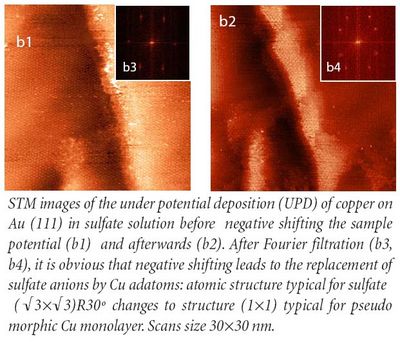 |
| left |
Hardware information
Electrochemical cell http://www.ntmdt.com/page/electrochemical
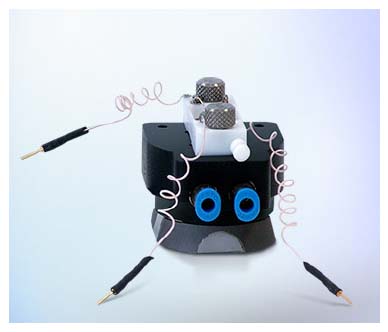 |
| center |
EC cell for STM and AFM experiments in controlled environment provides thermostabilization. Hermetic cell is optionally available.
Electronics http://www.ntmdt.com/page/electrochemical
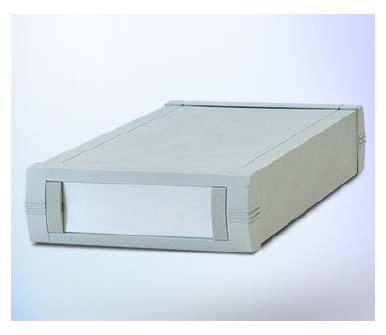 |
Bipotentiostat is a computer-controlled module for electrochemical experiments in potentiostatic, potentiodynamic and galvanostatic modes.
SPM
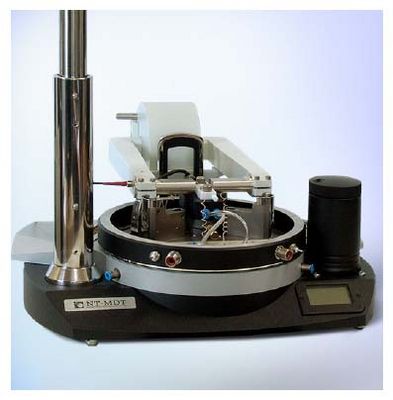 |
NTEGRA AURA http://www.ntmdt.com/device/ntegra-aura performs measurements in low vacuum or under controlled atmosphere environments. NTEGRA AURA setup http://www.ntmdt.com/device/ntegra-aura in the MFM configuration allows to perform EC experiments in external magnetic field.
Probes http://www.ntmdt-tips.com/
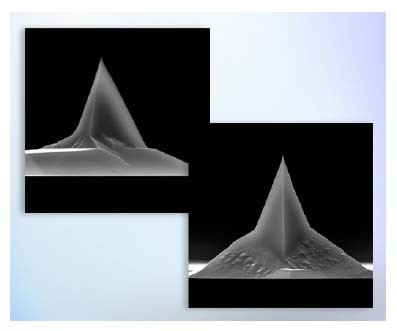 |
Conventional High Resolution AFM “Golden” Silicon Probes (CSG01) http://www.ntmdt-tips.com/catalog/golden/contact/products.html for contact mode are available with different coatings (Au, Al, PtIr, TiN, Au, diamond doped conductive e.t.c.) and tipless. Probes without any coating and for non-contact modes can be supplied as well.
|
|
||
|
|
||
| The latest news from around the world, FREE | ||
|
|
||
|
|
||
| Premium Products | ||
|
|
||
|
Only the news you want to read!
Learn More |
||
|
|
||
|
Full-service, expert consulting
Learn More |
||
|
|
||








